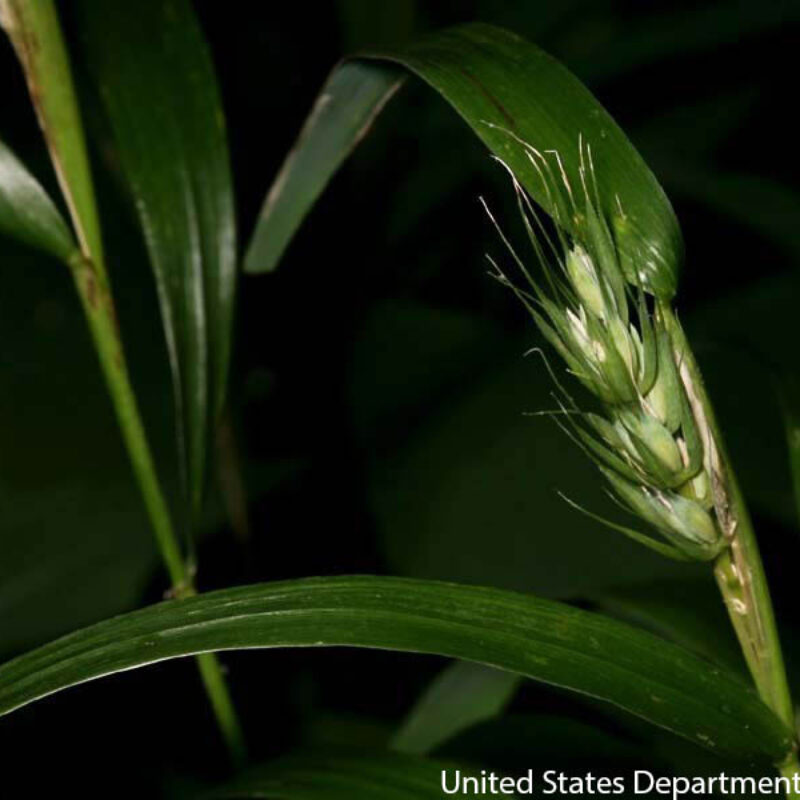Virginia WildryeElymus virginicus
A short-lived, cool-season perennial grass that clumps and reaches heights up to 3'. Virginia wild rye is used mostly as a forage and haying species. It is also used along stream banks for stabilization, slope buffers, vegetated swales, and in floodplain forest or savanna areas. Consider it for many types of wetland restoration. This species can become aggressive if it is seeded too heavily.
USDA symbol: ELVI3
General Information
| Plant Type | Grass |
|---|---|
| Height | 3 to 4 feet |
| Light Exposure | Sun, Part Sun |
| Soil Moisture | Medium |
| Bloom Color | Green |

Tolerances
| Flooding / Inundation Tolerance | Moderate |
|---|---|
| General Resilience | 5 |
| Salt Tolerance | Medium |
| Stress Tolerance | Drought Tolerant, Fire Tolerant, General Disturbance |
Pollinator Value: Low
| Bloom Months | July to September |
|---|
Project Planning
| Project Type | Boulevard, Erosion Control, Restoration, Shoreline Buffer |
|---|---|
| Coefficient of Conservatism | 4 |
| Herbivore Sensitivity | High |
| Lifespan | Perennial |
| Rate of Spread | Slow |
| Soil Stabilization | Shallow |
| Vegetative Reproduction | Absent |
Range
| County | Aitkin, Beltrami, Benton, Big Stone, Blue Earth, Brown, Carlton, Carver, Cass, Chippewa, Chisago, Clay, Clearwater, Cook, Cottonwood, Dakota, Dodge, Douglas, Faribault, Fillmore, Goodhue, Hennepin, Houston, Hubbard, Isanti, Itasca, Jackson, Kandiyohi, Kittson, Koochiching, Lac qui Parle, Lake, Lake of the Woods, Le Sueur, Lincoln, Marshall, Martin, McLeod, Mille Lacs, Morrison, Mower, Murray, Nicollet, Nobles, Norman, Olmsted, Otter Tail, Pine, Pipestone, Polk, Pope, Red Lake, Redwood, Renville, Rice, Rock, Roseau, Sherburne, Sibley, St. Louis, Stearns, Steele, Swift, Traverse, Washington, Watonwan, Wilkin, Winona, Wright, Yellow Medicine |
|---|---|
| Ecoregion | Driftless Area, Lake Agassiz Plain, North Central Hardwood Forests, Northern Glaciated Plains, Northern Lakes and Forests, Northern Minnesota Wetlands, Western Cornbelt Plains |
| Approximate Eco Province | Eastern Broadleaf Forest, Laurentian Mixed Forest, Prairie Parkland, Tallgrass Aspen Parklands |
